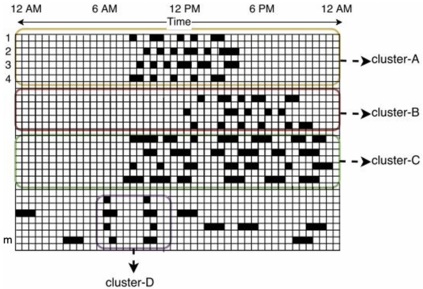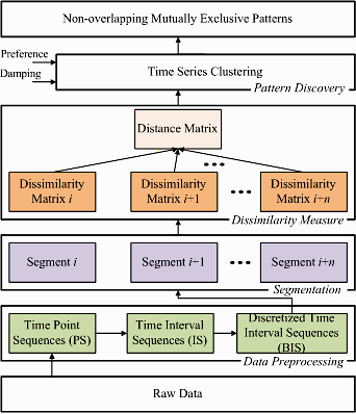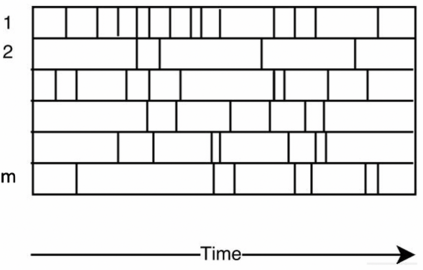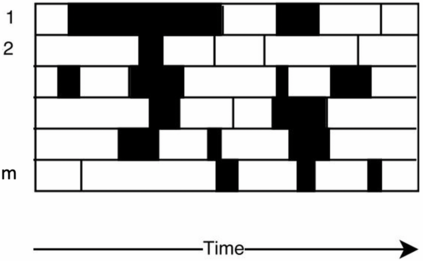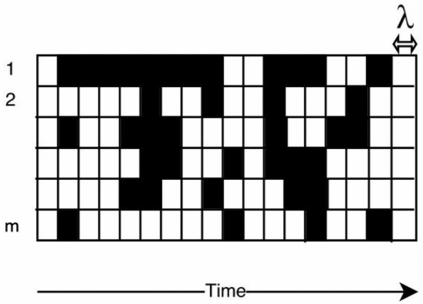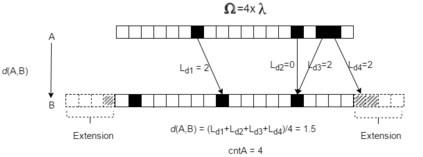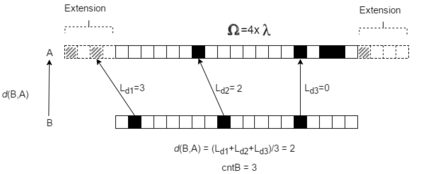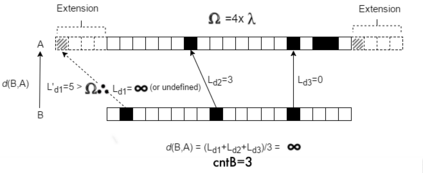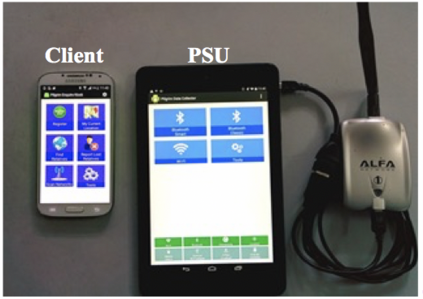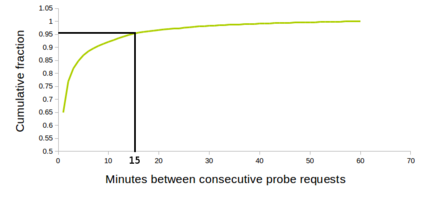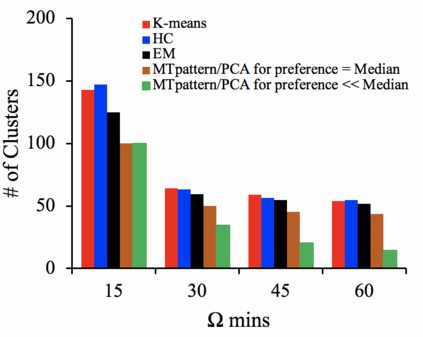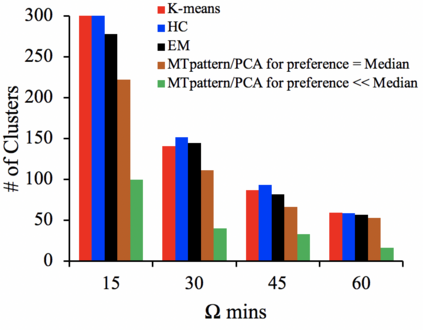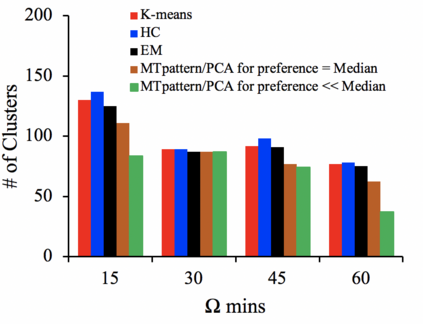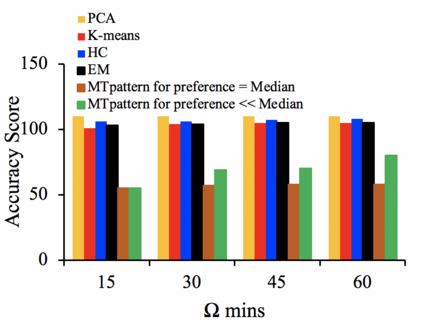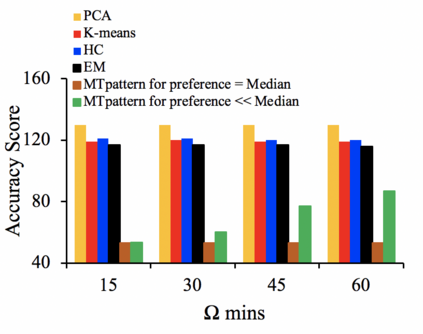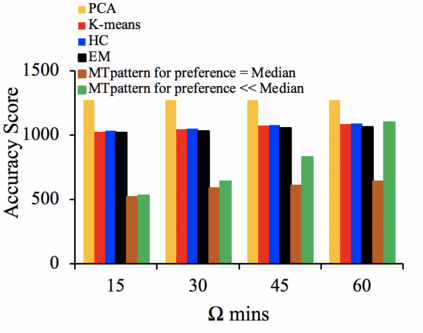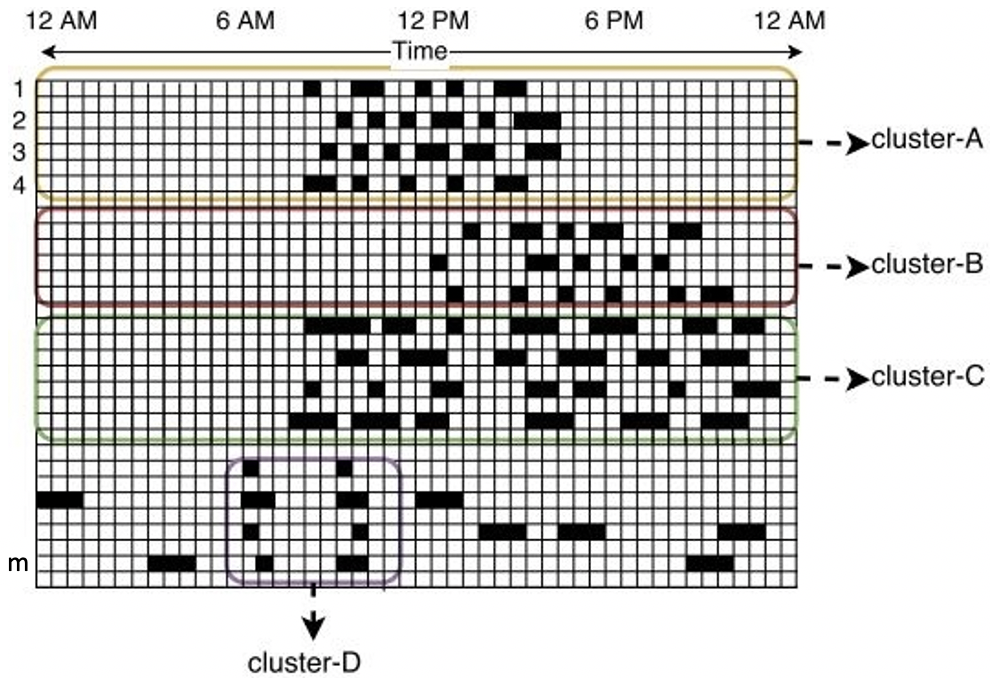Human behavior modeling deals with learning and understanding of behavior patterns inherent in humans' daily routines. Existing pattern mining techniques either assume human dynamics is strictly periodic, or require the number of modes as input, or do not consider uncertainty in the sensor data. To handle these issues, in this paper, we propose a novel clustering approach for modeling human behavior (named, MTpattern) from time-series data. For mining frequent human behavior patterns effectively, we utilize a three-stage pipeline: (1) represent time series data into sequence of regularly sampled equal-sized unit time intervals for better analysis, (2) a new distance measure scheme is proposed to cluster similar sequences which can handle temporal variation and uncertainty in the data, and (3) exploit an exemplar-based clustering mechanism and fine-tune its parameters to output minimum number of clusters with given permissible distance constraints and without knowing the number of modes present in the data. Then, the average of all sequences in a cluster is considered as a human behavior pattern. Empirical studies on two real-world datasets and a simulated dataset demonstrate the effectiveness of MTpattern w.r.to internal and external measures of clustering.
翻译:人类行为模型处理的是学习和理解人类日常日常活动所固有的行为模式。现有的模式采矿技术要么假定人类动态是严格定期的,或者要求输入模式的数量,或者不考虑传感器数据的不确定性。为了处理这些问题,我们在本文件中提议采用新型集群方法,从时间序列数据中模拟人类行为(名为MTPtptr),用新的集群方法来模拟人类行为(名为MTPtptrtan)。对于有效挖掘频繁的人类行为模式,我们使用一个三阶段管道:(1) 代表时间序列数据,按定期抽样的同等大小单位时间间隔顺序排列,以便进行更好的分析;(2) 提议一个新的距离测量方案,将能够处理数据中时间变化和不确定性的类似序列分组,(3) 利用一个基于原始的集群机制,将其参数微调到最小的集群输出数量,同时考虑到允许的距离限制,并且不知道数据中存在的模式的数量。然后,将一个集群中所有序列的平均值视为一种人类行为模式。然后,对两个真实世界数据集进行实证的研究,并模拟数据集显示MTpattertertern wi.r.to 内部和外部的组合测量的有效性。

